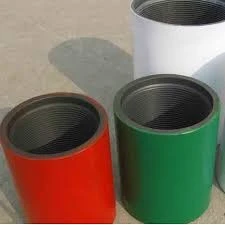- Afrikaans
- Albanian
- Amharic
- Arabic
- Armenian
- Azerbaijani
- Basque
- Belarusian
- Bengali
- Bosnian
- Bulgarian
- Catalan
- Cebuano
- Corsican
- Croatian
- Czech
- Danish
- Dutch
- English
- Esperanto
- Estonian
- Finnish
- French
- Frisian
- Galician
- Georgian
- German
- Greek
- Gujarati
- Haitian Creole
- hausa
- hawaiian
- Hebrew
- Hindi
- Miao
- Hungarian
- Icelandic
- igbo
- Indonesian
- irish
- Italian
- Japanese
- Javanese
- Kannada
- kazakh
- Khmer
- Rwandese
- Korean
- Kurdish
- Kyrgyz
- Lao
- Latin
- Latvian
- Lithuanian
- Luxembourgish
- Macedonian
- Malgashi
- Malay
- Malayalam
- Maltese
- Maori
- Marathi
- Mongolian
- Myanmar
- Nepali
- Norwegian
- Norwegian
- Occitan
- Pashto
- Persian
- Polish
- Portuguese
- Punjabi
- Romanian
- Russian
- Samoan
- Scottish Gaelic
- Serbian
- Sesotho
- Shona
- Sindhi
- Sinhala
- Slovak
- Slovenian
- Somali
- Spanish
- Sundanese
- Swahili
- Swedish
- Tagalog
- Tajik
- Tamil
- Tatar
- Telugu
- Thai
- Turkish
- Turkmen
- Ukrainian
- Urdu
- Uighur
- Uzbek
- Vietnamese
- Welsh
- Bantu
- Yiddish
- Yoruba
- Zulu
Dimensions and Specifications for Casing Couplings in Oil and Gas Applications
Casing Coupling Dimensions A Key Element in Oil and Gas Operations
In the oil and gas industry, the efficiency and safety of drilling operations heavily rely on the understanding and appropriate application of various components. One such crucial element is the casing coupling, which plays an essential role in the construction of wells. Casing couplings are the threaded connectors that join sections of casing pipe together, enabling the structural integrity and functionality of the wellbore. Understanding the dimensions and specifications of these couplings is vital for engineers and operators alike, as they impact the overall performance of drilling operations.
Understanding Casing and Couplings
Casing refers to the steel pipe that is installed in the wellbore to stabilize the hole and protect the surrounding formations. It also prevents the contamination of groundwater and isolates oil and gas zones. Couplings, on the other hand, are short sections of pipe that connect the individual casing lengths. Their dimensions are critical as they ensure proper alignment, load distribution, and seal integrity. Couplings typically come in various sizes and types, catering to the specific requirements of different drilling environments.
Dimensions of Casing Couplings
The dimensions of a casing coupling are defined by several key factors, including outer diameter (OD), inner diameter (ID), and wall thickness. The OD generally conforms to industry standards, such as those set by the American Petroleum Institute (API). For instance, a common size for casing couplings is 4.5 inches in OD, with varying wall thickness measurements, depending on the pressure and environmental requirements of the application.
Moreover, the threading on the couplings is equally significant. API threads, known for their taper and precision, are commonly used as they ensure a tight seal and facilitate easy assembly and disassembly. The dimensions of the threads play a substantial role in the coupling's strength and ability to withstand the pressures encountered during drilling operations.
casing coupling dimensions

Importance of Proper Dimensions
Properly dimensioned casing couplings are pivotal for several reasons. Firstly, they ensure mechanical stability throughout the drilling process. An inadequately sized coupling can lead to joint failure, resulting in catastrophic consequences, including blowouts or total well abandonment.
Secondly, the right dimensions help maintain hydraulic integrity within the casing. Any discrepancies in size or fit can lead to leaks, compromising the well's safety and leading to significant environmental concerns. This is particularly important in offshore drilling operations, where even minor leaks can have severe ramifications.
Lastly, the compatibility of casing couplings with casing strings must be considered. When designing a well, engineers must ensure that the couplings chosen will be compatible with the casing dimensions and the intended geological conditions. This foresight helps to preemptively tackle any potential issues that may arise during the drilling or production phases.
Conclusion
Casing coupling dimensions are a fundamental aspect of drilling engineering in the oil and gas sector. The importance of carefully selecting and verifying these dimensions cannot be overstated, as they significantly influence the performance, safety, and efficiency of operations. As the industry continues to evolve, advancements in materials and manufacturing processes will likely impact the development of casing couplings, ensuring they remain robust enough to meet the demands of modern drilling environments.
In essence, while casing couplings may seem like minor components in the grand scheme of drilling projects, their dimensions are intertwined with the success and safety of oil and gas exploration and production. Therefore, a thorough understanding of their specifications is indispensable for industry professionals seeking to optimize well construction and operations.
-
Tubing Pup Joints: Essential Components for Oil and Gas OperationsNewsJul.10,2025
-
Pup Joints: Essential Components for Reliable Drilling OperationsNewsJul.10,2025
-
Pipe Couplings: Connecting Your World EfficientlyNewsJul.10,2025
-
Mastering Oilfield Operations with Quality Tubing and CasingNewsJul.10,2025
-
High-Quality Casing Couplings for Every NeedNewsJul.10,2025
-
Boost Your Drilling Efficiency with Premium Crossover Tools & Seating NipplesNewsJul.10,2025







